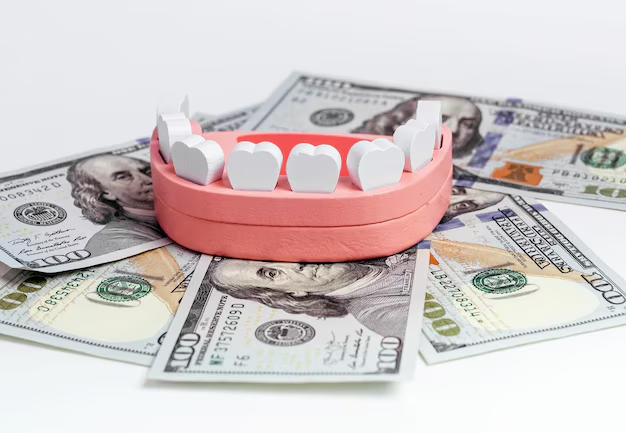Exploring the Costs: Dental Implants vs. Partial Dentures
Choosing between dental implants and partial dentures is a significant decision for many individuals seeking restorative dental options. Understanding the costs associated with each can guide you in making an informed choice. In this article, we'll break down the expenses involved with dental implants and partial dentures, examining the various factors that impact pricing. We'll also explore related considerations, such as durability, aesthetic outcomes, and maintenance needs.
Understanding Dental Implants
Dental implants are considered a permanent solution for missing teeth. They involve surgically placing a titanium post into the jawbone, which acts as an artificial tooth root. Once the post integrates with the bone, a crown is attached, forming a complete artificial tooth.
Cost Components of Dental Implants
The cost of dental implants can vary widely based on several factors:
- Initial Consultation: Before any procedure, a dentist or oral surgeon conducts a thorough examination, often including X-rays or 3D imaging. This can influence total expenses.
- Surgical Procedure: The implant procedure itself is a series of appointments. Each phase, from the placement of the post to the attachment of the crown, has its cost.
- Materials Used: The quality and type of materials (such as titanium posts and porcelain crowns) can affect the price.
- Geographic Location: Prices vary depending on the region and the demand and cost of living.
- Additional Procedures: If bone grafting or sinus lifts are needed to prepare the jaw, costs can increase.
Long-Term Investment
While dental implants may have a higher upfront cost, they are renowned for their longevity. With proper care, they can last a lifetime, which often offsets the initial investment.
Understanding Partial Dentures
Partial dentures are removable appliances that replace one or several missing teeth, anchored by the remaining natural teeth. They are often chosen for their versatility and affordability.
Cost Components of Partial Dentures
Several factors influence the cost of partial dentures:
- Preliminary Examinations: Initial assessments, similar to those for implants, will incur costs, though typically lower.
- Materials and Design: The materials used (e.g., acrylic, metal) and the complexity of the design impact pricing.
- Number of Teeth Replaced: The more teeth you need to replace, the higher the cost.
- Adjustment and Fitting: Adjustments post-delivery might be necessary to ensure comfort, which can add to costs.
Budget-Friendly Solution
Partial dentures generally have a lower initial cost compared to implants. They are an accessible option for many individuals seeking a quick, less invasive solution for missing teeth.
Comparing Costs: Implants vs. Partial Dentures
When weighing the options between dental implants and partial dentures, consider both the short-term and long-term financial implications.
Short-Term Costs
- Dental Implants: Typically have a higher initial investment due to surgical and material expenses.
- Partial Dentures: Offer an economical choice initially, especially for those needing immediate solutions.
Long-Term Costs
- Dental Implants: Minimal maintenance costs over time, as they are designed to last many years.
- Partial Dentures: Might require repairs or replacements more frequently, increasing costs over time.
Insurance and Payment Plans
Many dental insurance plans offer partial coverage for both procedures, though implants may cover less due to their elective nature. Exploring financing options or payment plans can alleviate the financial burden.
Additional Considerations Beyond Cost
While financial considerations are paramount, it’s essential to weigh other factors when choosing between dental implants and partial dentures.
Aesthetics and Functionality
- Implants: Often indistinguishable from natural teeth and provide excellent functionality; they are stable and do not shift.
- Dentures: Though modern designs can look natural, they might not match the aesthetics or comfort of implants over time.
Maintenance and Care
- Implants: Require standard dental hygiene practices, similar to natural teeth.
- Dentures: Need routine cleaning and care; over time, as your mouth changes, adjustments may be necessary to ensure a proper fit.
Durability
- Implants: Can last a lifetime with proper care.
- Dentures: Generally need replacement every 5-10 years due to wear and alterations in mouth shape.
Impact on Oral Health
- Implants: Help prevent bone loss and maintain facial structure by stimulating the jawbone.
- Dentures: Do not provide stimulation to the jawbone, potentially leading to bone resorption over time.
Summary: Key Considerations When Choosing
When deciding between dental implants and partial dentures, consider these crucial factors:
- 💰 Initial Cost: Implants are generally more expensive upfront, while dentures are more budget-friendly initially.
- ⏳ Longevity and Durability: Implants are a long-term investment with minimal future costs; dentures may require more frequent replacements.
- 😃 Aesthetics and Comfort: Implants offer a natural appearance and feel; dentures may not always match the comfort and aesthetics over time.
- 🦷 Oral Health Impact: Implants help maintain jawbone structure; dentures do not stimulate jawbone growth.
- 🔧 Maintenance Needs: Implants require standard oral hygiene, whereas dentures need regular cleaning and occasional adjustments.
Each option comes with its own set of advantages and considerations. It's essential to consult with a dental professional to evaluate your specific needs and preferences. The right choice balances cost, function, and the overall impact on your oral health and lifestyle, empowering you to make the best decision for your smile.

Related Topics
- a Bridge For Teeth
- a Denture Plan That You Can Pay Monthly Payments
- Are Dentures Covered By Insurance
- Are Dentures Covered By Medicare
- Are Dentures Uncomfortable
- Are Permanent Dentures Thinner Than Temporary Dentures
- Are Snap-in Dentures Covered By Insurance
- Are There Plastic Dental Partials With Metal
- Can a Tooth Be Added To a Valplast Denture
- Can Dogs Get Dentures